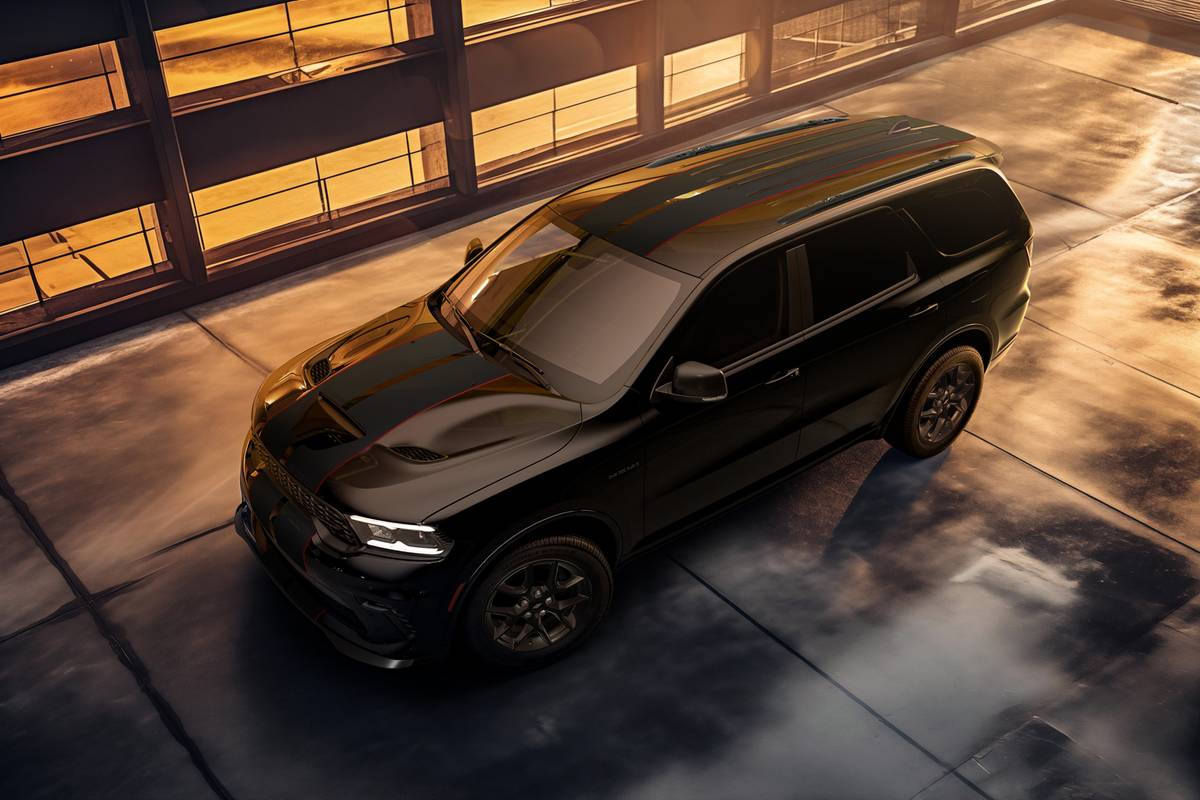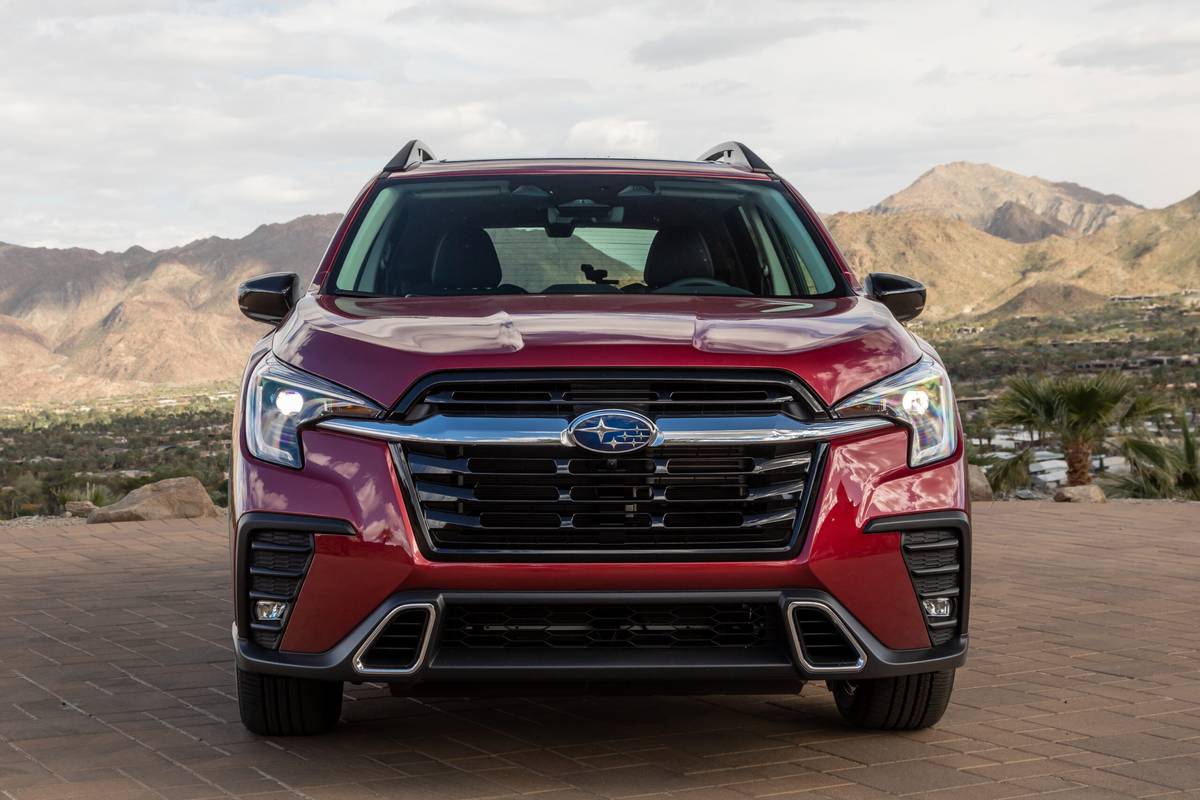chicagotribune.com's view
After three generations of selling a compact sport-utility vehicle designed for Japan in the U.S., Toyota decided it was time for a change.
Considering more 4Runners are sold in the U.S. than in Japan and drawing upon a line from “Jaws,” it was decided: “We were going to need a bigger boat,” said Don Esmond, senior vice president and general manager of Toyota.
“We needed to expand the envelope in every direction. And instead of adding a couple millimeters here and there, we needed to grow significantly,” Esmond said.
The fact that the Ford Explorer, Chevrolet Blazer and GMC Envoy have grown from compacts to midsize models and enjoy higher sales as a result, also affected Toyota’s decision to enlarge the fourth-generation 4Runner for ’03.
And that’s why 4Runner is now longer, wider and more powerful–and designed for the U.S.
Wheelbase has grown by 4 inches to provide for smoother, more car-like ride and handling in a sport-ute built on a pickup platform. And it has grown 4 inches in width so neither front- nor rear-seat occupants have to bump elbows.
As a result, however, consumers in Japan, a country where roads, parking places and car ports are very narrow, and where the government imposes a tax on any vehicle wider than 67 inches, are going to pay a penalty.
But the U.S. is 4Runner’s biggest market, so that concession was made, Esmond said.
To further conform to its biggest market, a new 4-liter, 245-horsepower V-6 replaces the 3.4-liter, 183-h.p. V-6. And for the first time a V-8, the same 4.7-liter offered in the Land Cruiser and Sequoia SUVs and Tundra pickup, is now offered in 4Runner.
The V-6 is rated at 245 h.p. and 282 foot-pounds of torque; the V-8 235 h.p., but 320 foot-pounds of torque for maximum towing, pulling or hauling a cabin full of people and their possessions.
The V-6 is teamed with a 4-speed automatic; the V-8 a new 5-speed automatic.
The V-6 is just going into production and won’t be offered until late in December. When it arrives, depending on model, it will be priced $800 to $1,000 less than with a V-8, perhaps why Toyota estimates two-thirds of all buyers will choose the V-6.
4Runner is offered in base SR5, Sport and Limited versions for ’03. We tested the 4WD Sport, which had been an option package but now is a separate model for those who want a little more sport as well as utility.
To separate Sport from the base SR5 and luxury Limited, it features a hood scoop, plastic wheel-lip moldings/rocker-panel extensions, fog lamps, 17-inch alloy wheels and all-season radial tires (16-inch on the SR5) with raised white lettering and color-keyed outside heated (and folding) power mirrors.
The V-8 is sufficiently potent to power up inclines or pull into and out of the passing lane without hesitation and is the choice not only for towing, but also for those who enjoy lively response to pedal input.
The V-8 is rated at 16 m.p.g. city/20 m.p.g. highway in two-wheel-drive and 15/19 in four-wheel-drive; the V-6 is rated at 18/21 in 2WD, 17/20 4WD.
With the bigger dimensions 4Runner now offers a 23-gallon gas tank, a 1 1/2-gallon increase. With the V-8, you’ll need it.
The expanded dimensions and standard 17-inch all-season radials (16-inch on the base SR5) contribute to the car-like ride, handling and stability.
Give most of the credit, however, to the standard sport enhancement suspension system on the Sport called X-REAS developed by Yamaha for Toyota. It is designed to control motion front to rear as well as across the vehicle to reduce the tendency to float over wavy roads. At the same time, it minimizes body pitch and roll in tight turns or quick lane changes.
The 4WD system is full time and comes with an easy-to-use dial in the dash to move into 4WD low if needed for heavy-duty off-roading or maneuvering through deep sand or snow.
All 4Runners come with four-wheel anti-lock brakes as standard along with vehicle skid control that applies brakes and regulates throttle to keep wheels from slipping and electronic traction control. All 4WD models also offer an active traction control upgrade to reduce wheel slippage in acceleration to get you moving and yaw sensors to keep the vehicle on course regardless of road surface when already moving. Hard to make a mistake with all that technology.
Plus all 4WD models come standard with Downhill Assist Control (DAC) and Hill-start Assist Control (HAC). DAC uses throttle control and automatic braking to keep you from going too fast downhill while off-roading, while HAC automatically applies the brakes to keep you from rolling backward when moving your foot from brake to gas pedal when traveling uphill.
Other noteworthy items include a ceramic coating on the outside mirrors and side door windows to shed water, akin to what Toyota calls applying Rainex on the glass, except the ceramic coating is permanent.
A pair of convex mirrors along the roof pillars in the cargo hold provide better sight lines when backing from the lot if parked between minivans or other SUVs. The mirrors aren’t available with the optional ($625) JBL audio upgrade or JBL/navigation system ($2,475) package because the pillar space is used for added speakers.
As with the Cadillac NorthStar V-8, the Toyota V-8 comes with a feature that disables the starter so you don’t get metallic grind if you turn the key while the engine is idling.
Other highlights include a cellphone holder in front of the center console; a 115-volt outlet ($100) in the console to power your laptop computer; a fold-down rear-seat console with pull-out dual cup and burger holders; a pair of bottle holders in each rear side door, which strangely come with a warning that they are for bottles, not cans, though cans will fit.
Hmm. Why do two rear-seat occupants need a total of four bottle and two cupholders?
You also can power down the rear hatchlid window using a button on the dash or on the key fob or by turning the key in the rear hatch lock. However, only the dash button or key in the lock will power window up again; the fob won’t do it.
Rear seats fold down without having to remove headrests. And for maximum space, you can opt for the double-deck cargo system ($100) in back, a floor panel that lifts and secures along the side walls to create a shelf so you can put items on or under or both.
What 4Runner doesn’t come with is three rows of seats or a rear-seat DVD entertainment system. Esmond said if Toyota adds a third row to its midsize SUVs, it will be to the more on-road-oriented Highlander first rather than the more off-road-capable 4Runner. The DVD was ruled too costly.
Base price of the 4WD Sport is $32,075. Standard equipment includes automatic air conditioning, tilt/telescoping steering wheel, power windows/locks/seats and a 5,000-po und trailer hitch.
Side air curtains are a new option at $650.
Latest news



